 The history of the American Camp Visitor Center is long and storied. As soon as the park was established in 1966 there had been a modest vision for visitor use that included a permanent visitor center. Over the years the goal remained, and multiple incarnations of management planning reimagined how to serve visitor needs within the confines of the funding provided. But time and again the goal of a permanent visitor center were frustrated by the realities of funding, and priorities within government. These realities, however, did not stop superintendents, managers, and field rangers at the park who always found creative ways to meet the public’s needs.
The history of the American Camp Visitor Center is long and storied. As soon as the park was established in 1966 there had been a modest vision for visitor use that included a permanent visitor center. Over the years the goal remained, and multiple incarnations of management planning reimagined how to serve visitor needs within the confines of the funding provided. But time and again the goal of a permanent visitor center were frustrated by the realities of funding, and priorities within government. These realities, however, did not stop superintendents, managers, and field rangers at the park who always found creative ways to meet the public’s needs.When San Juan Island National Historical Park was first established in 1966, there were no facilities for visitors, though big plans would soon evolve. In 1967 administrative offices were leased in the Carter Building on Spring street, and a trailer was purchased for seasonal housing for employees and placed in a trailer park in Friday Harbor. Concepts for visitor services were still evolving for a park estimated to serve about 25,000 visitors per year in the 1970s, with about half arriving by boat, but a formal visitor center was always part of the plan. Today, the park serves approximately 250,000 visitors per year and annual visitor numbers continue to increase.
The original five-year plan for the park did not gain funding for a permanent visitor center, but the 1971 administrative plan provided for an “interpretive center” to be constructed at American Camp, as well as a campground. That plan foresaw “construction of a visitor facility that would be staffed in the summer season and provide information, publication sales, and restrooms.” But owing to numerous considerations that plan did not come to fruition even as visitor numbers to the park continued to increase. But innovation soon found a solution, if only a temporary one.
In 1973, a contract was awarded for construction of an “Interpretive Exhibit Shelter” which was completed in 1975. The shelter served the park’s interpretive needs for just a few years when a new/temporary solution had to be found. There were no restrooms in that original facility, but there was money enough to construct a double outhouse; men’s and women’s, to the thanks of many wayward visitors who had arrived from town on bicycles with no place to….go.
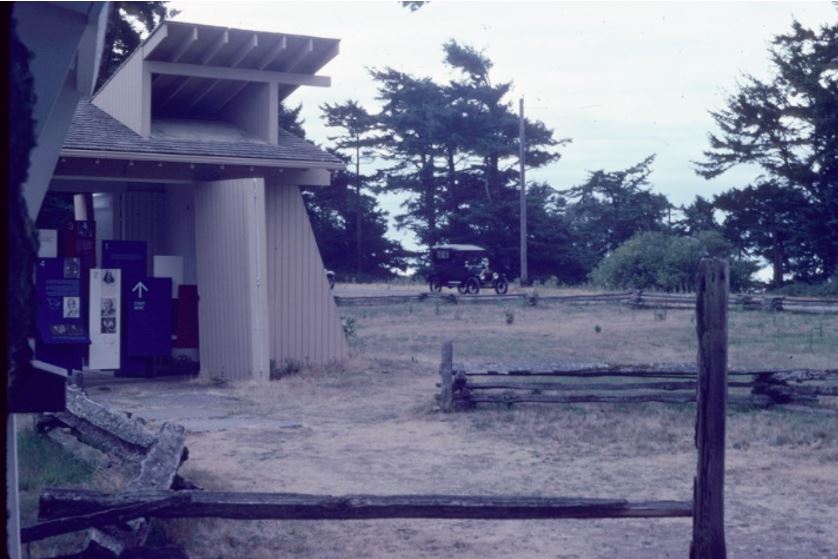
In 1977 the landlord for the park headquarters in Friday Harbor informed the park that they were terminating the park’s lease, and the park couldn’t find a suitable replacement. Because government regulations at the time limited onsite construction to $3,000; an alternative had to be found. Because regulations would allow a “temporary structure”, a trailer was designed to meet the park’s temporary needs. When the trailer, designed and built on the mainland, was to arrive late, the trailer that had been used as housing for seasonal employees was moved to American Camp to serve as a temporary headquarters until the new/temporary trailer arrived.
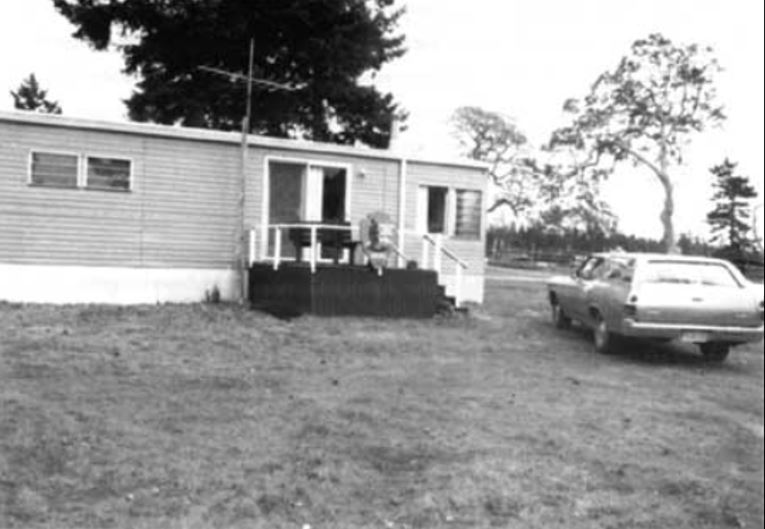
When the new/temporary trailer arrived, it was set up and commissioned for use. That "temporary" structure initially served as a visitor contact station containing a lobby and exhibit space, with restrooms continuing to be served by a double outhouse at the south end of the parking area. Over time, the trailer also began to serve as a bookstore, historical library and archive, living history storage facility, theater, and administrative offices, among other uses. It served those uses until the fall of 2019 when it was demolished to make way for a new visitor center.
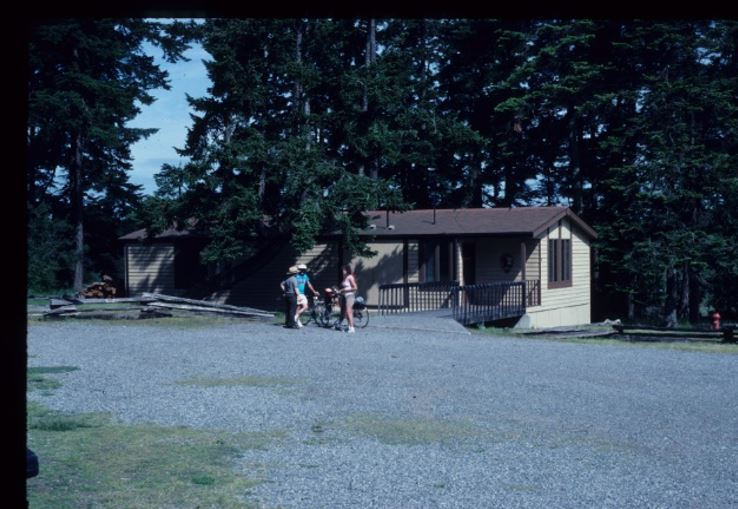
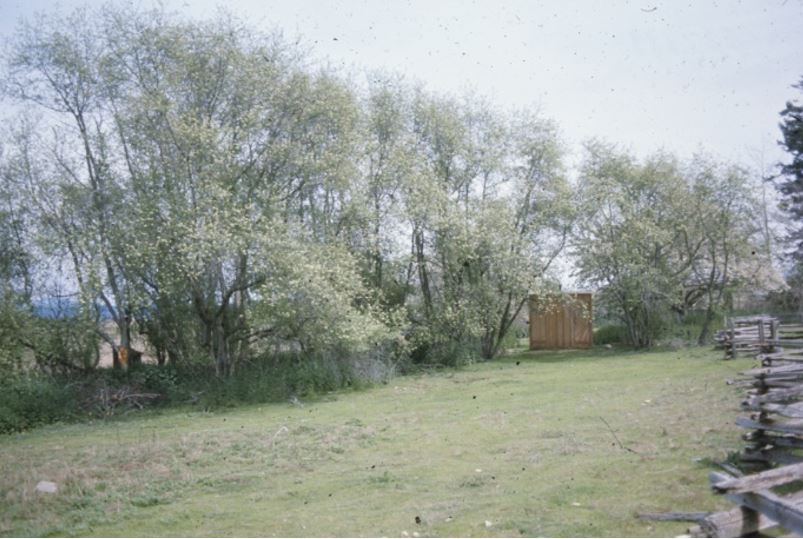 When the new visitor center structure, now complete, is commissioned, exhibits added, and staff settled, it will mark roughly 55 years since the park’s creation and the origins of the idea for a visitor center at American Camp. Over the years many park superintendents, park managers, rangers, and others have planned and lobbied for completion of the original concept. Perhaps through persistence, or perhaps because of sheer will, the original vision of a permanent visitor center for the park are now being realized.
When the new visitor center structure, now complete, is commissioned, exhibits added, and staff settled, it will mark roughly 55 years since the park’s creation and the origins of the idea for a visitor center at American Camp. Over the years many park superintendents, park managers, rangers, and others have planned and lobbied for completion of the original concept. Perhaps through persistence, or perhaps because of sheer will, the original vision of a permanent visitor center for the park are now being realized.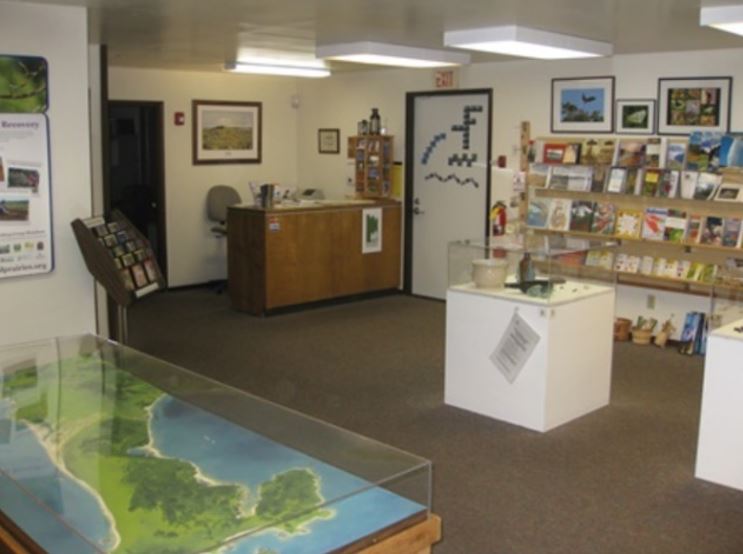
Carl Stoddard, the park’s first superintendent (1969 – 1974), hoped to have a permanent visitor center ready for the 100th anniversary of the resolution of the Pig War in 1972. Now, Elexis Fredy, the park’s current superintendent and her staff will be preparing the park’s first permanent visitor center to celebrate the 150th anniversary of that event. The irony of that 50-year timeline, and the timing of the new/permanent American Camp Visitor Center are not lost on those of us who have worked on the project. And yet, perhaps because of the long road to arrive at this point, or perhaps because of the many delays and frustrations over the years, the satisfaction and pride of delivering this much needed, and much deserved facility to a park so deeply loved by so many is incredibly sweet. I am certain that Ranger Stoddard would be just as pleased as we are with the result.

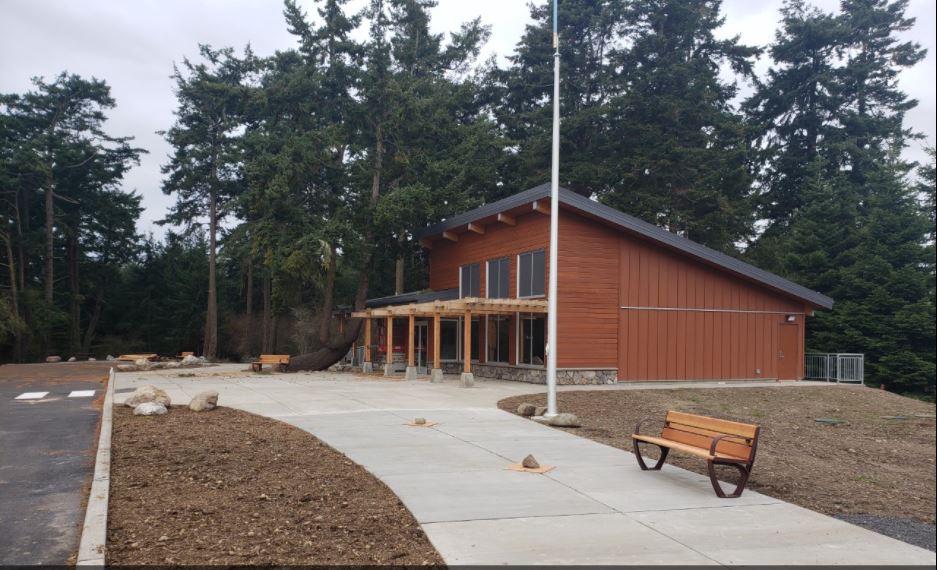
New visitor center from the south
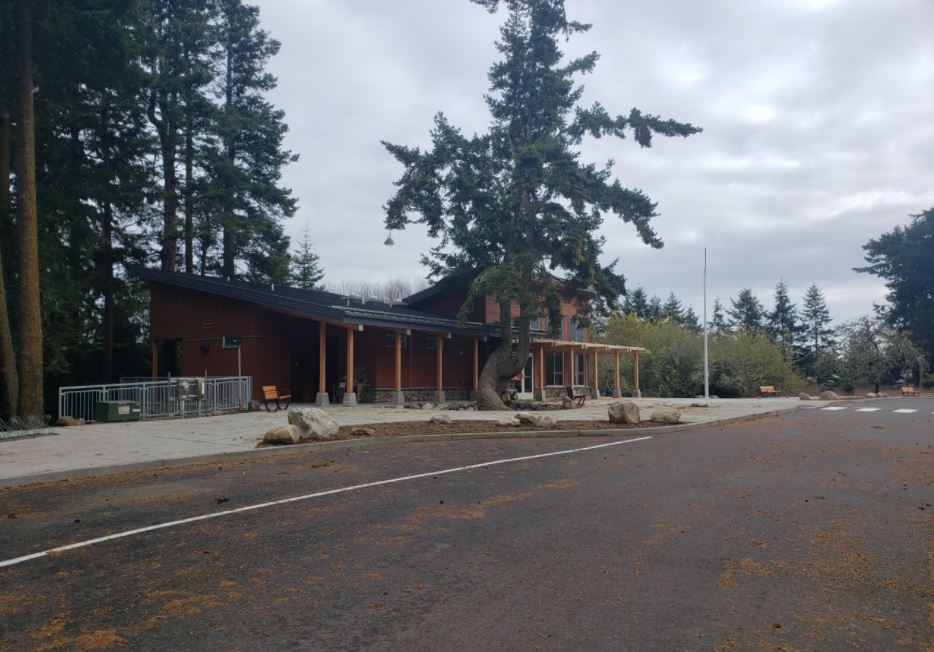

New visitor center from the north
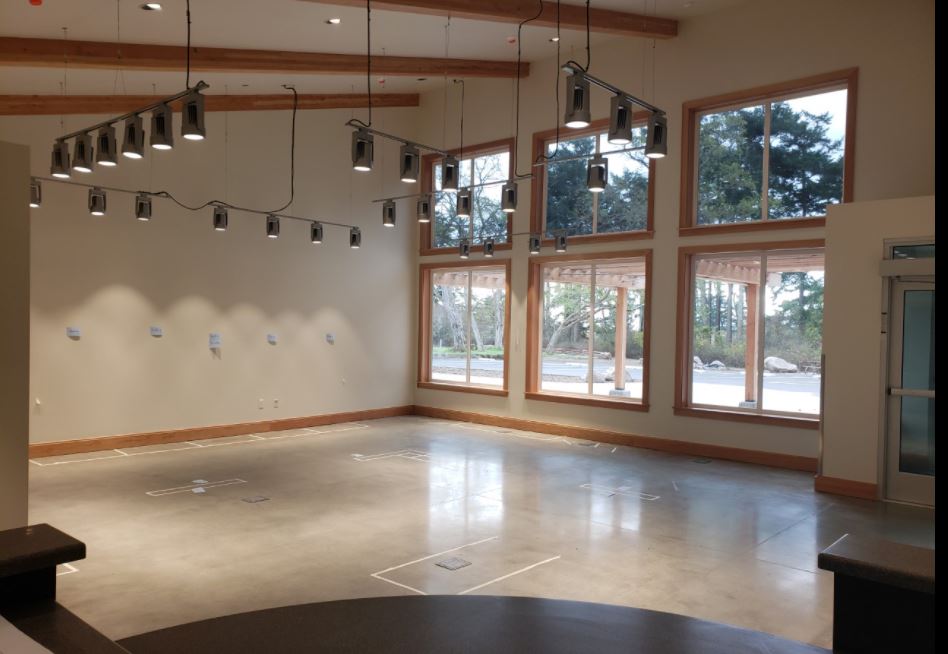
View from visitor services desk toward front
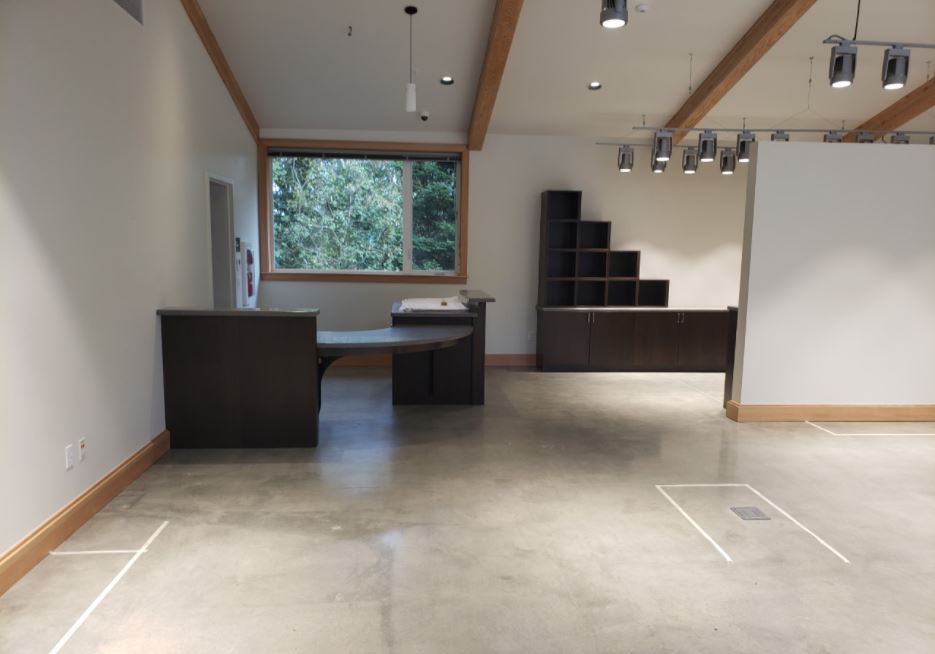
View from main entrance toward visitor service desk
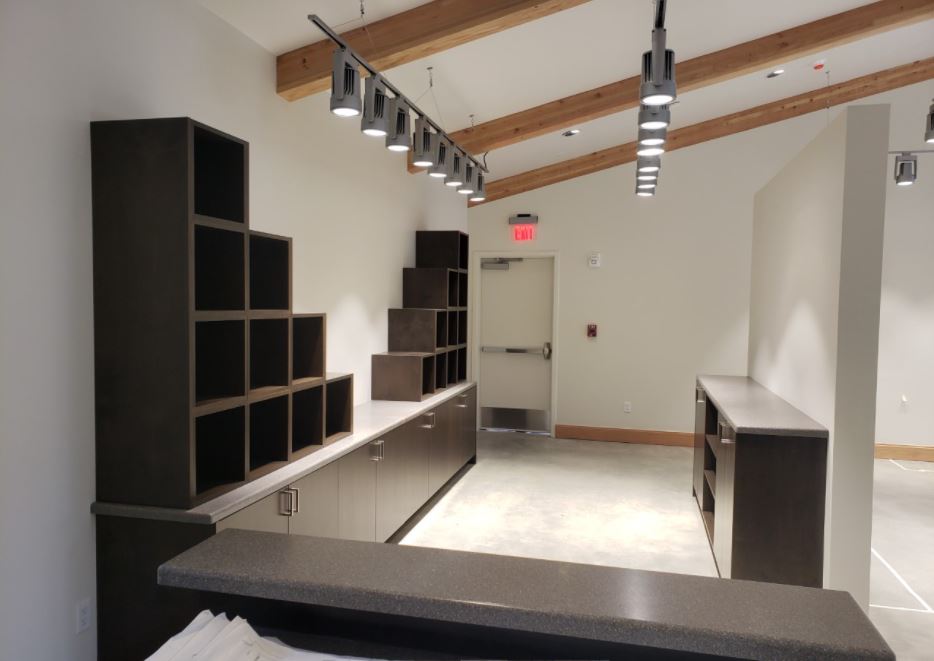
The bookstore from visitor services desk
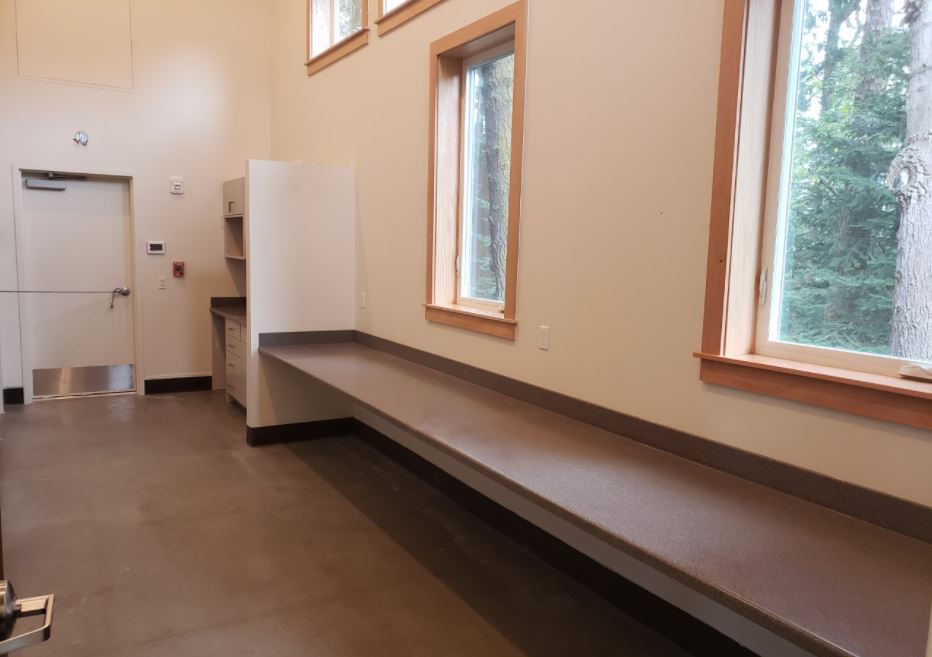
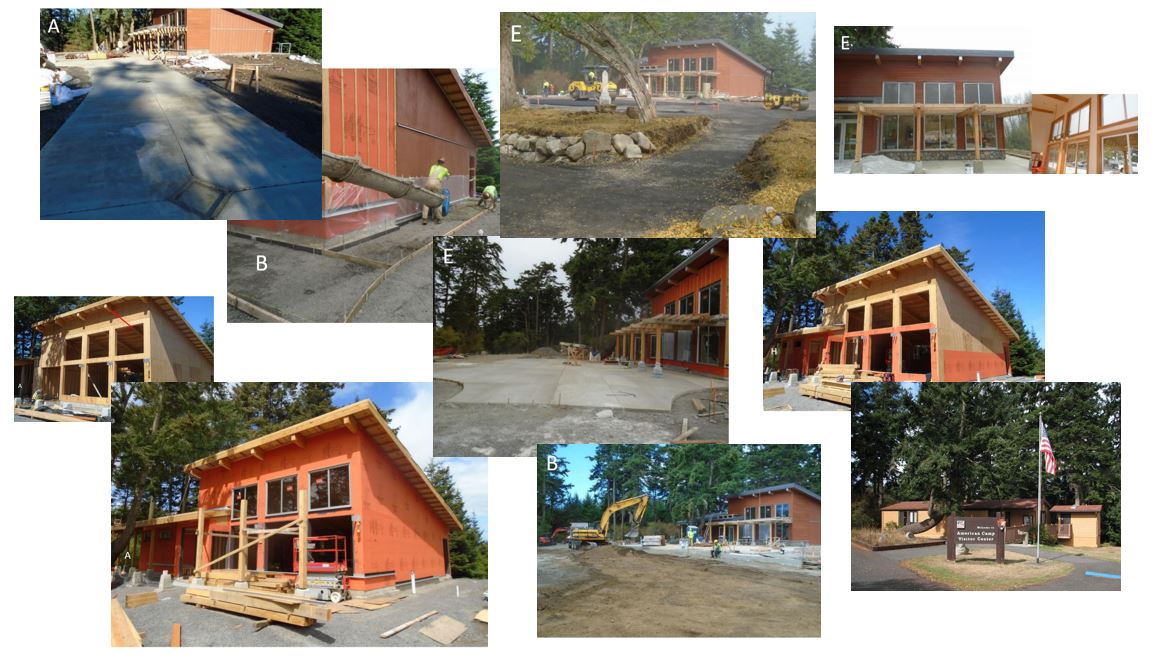

View from visitor services desk toward front

View from main entrance toward visitor service desk

The bookstore from visitor services desk


